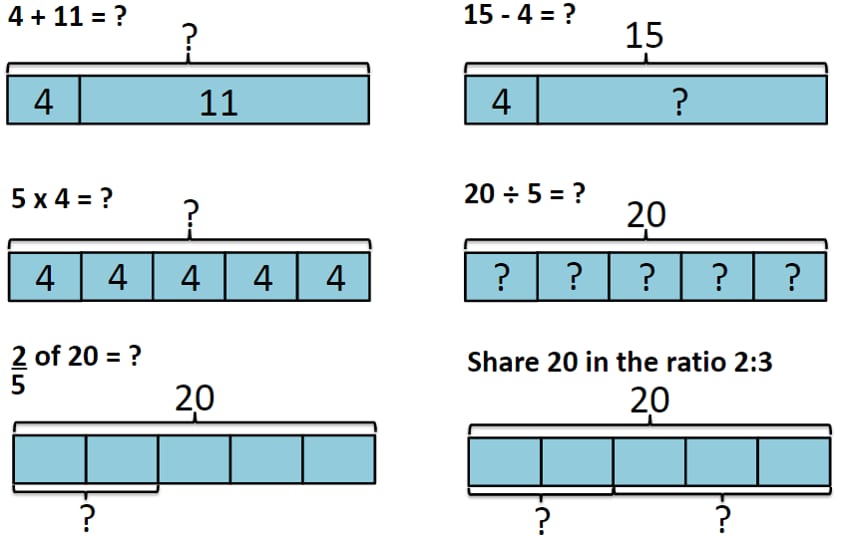Getting to Grips with the Bar Model

Just like many teachers, we publishers are also getting to grips with best practice from South East Asia. Pearson recently sponsored and attended the White Rose Maths Hub Bar Modelling Conference - here’s what we learned!
Bar model benefits
The bar model is a simple visual to enable children to visualise number and operations to solve problems. It is particularly powerful to visualise relationships like this:

Bar models can be different, but consistency is key
“Bar model”, “model diagram”, “strip diagram”, “tape diagram” - all different names for the same thing. They don’t always look the same either: spaces between strips, brackets, labelling side bars and outside of bars.

What’s important is that the format and way you use it is consistent within your school and outlined in your calculation policy.
The bar model isn’t always the best model
White Rose Maths Hub SLE Beth Smith asked us to really consider what learning or abstract method we are trying to master. Don’t use the bar model for everything, other forms of pictorial representation are sometimes more appropriate.
You are never too old … for the C-P-A approach
The bar model makes most sense when it is linked to concrete materials or pictorial representations. Quite often the younger the pupil, the more concrete the teaching and learning, and the older the pupil the more abstract. And often the pictorial stage is skipped altogether. Visualisation is important to grasp maths concepts, and problems need visualising no matter what the stage of learning - even at Key Stage 3.
Top Tips!
- Use a vertical “starting line” to help children to draw the model accurately aligned from the left.
- Don’t use squared paper - stick plain paper into exercise books to make bar modelling accessible for all children.
- Give it a go. Children don’t need an introduction to the model itself, it should make sense in context of the lesson.
Looking for more mastery support and advice like this?
Visit our Teaching for Mastery hub for more mastery support and advice, as well as information on resources we have available to support you with teaching for mastery, including new Power Maths.
You can also sign up to receive mastery updates like this via email.